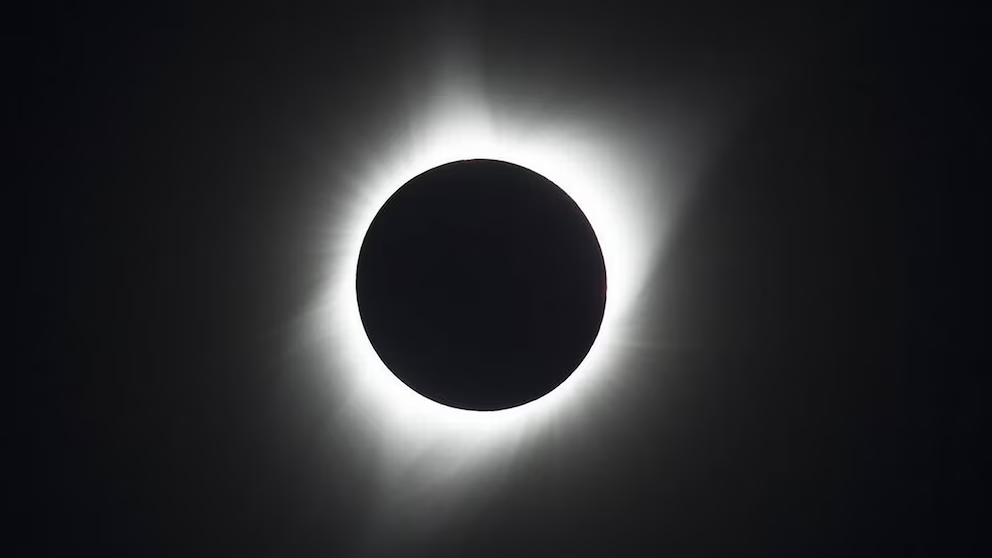- On April 8, there will be a rare total solar eclipse viewable across North America.
What are eclipses?
- Eclipses are astronomical events in which the sun, moon, and Earth align in precise ways.
- There are two types of eclipses: solar and lunar.
- A solar eclipse occurs when the moon passes between the sun and the Earth on a new moon, blocking the sun’s light.
- A lunar eclipse happens when the Earth passes between the sun and the moon during a full moon, producing a shadow on the moon.
What is a total solar eclipse?
- During a total solar eclipse, the moon passes between the sun and Earth, completely concealing the sun’s face along a short path across our planet’s surface.
- This is referred to as the “path of totality.”
- The midday sky darkens, comparable to dusk or dawn, and nocturnal animals have been observed to awaken, mistaking it for nighttime.
Stages of Total Solar Eclipse
- A total solar eclipse has multiple unique stages.
- The partial eclipse phase begins when the moon passes between Earth and the sun, partially blocking it and giving the sun the appearance of a crescent shape.
- Because of the irregular lunar terrain, points of sunlight shine around the moon’s edges during the subsequent Baily’s Beads phase, resulting in little beads of light.
- During the diamond ring phase, a single brilliant spot appears along the lunar edge, while the sun’s atmosphere creates a ring of light around the moon. This phenomena precedes totality.
Following totality, the other phases repeat as the moon continues on its journey until the eclipse ends.
Other types of solar eclipses:
- Partial Solar Eclipse
- This occurs when the Sun, Moon, and Earth are not perfectly aligned.
- The sun appears to cast a dark shadow over only a small portion of its surface.
- Annular Solar Eclipse
- An annular eclipse occurs when the moon is at its farthest distance from Earth. Because the moon is farther from Earth, it seems smaller. It does not obscure the complete view of the sun. The moon in front of the sun appears as a dark disc on top of a larger sun-coloured disc. This forms what appears to be a ring around the moon.
- During a solar eclipse, the moon throws two shadows across Earth. The initial shadow is known as the umbra. This shadow becomes smaller as it approaches Earth. It is the darkest part of the moon’s shadow.
- The second shadow is known as the Penumbra. The penumbra expands as it approaches Earth. People standing in the penumbra will witness a partial eclipse. People standing in the umbra will witness a total eclipse.
Why don’t solar eclipses occur on every New Moon?
- The Moon’s orbit tilts 5° relative to Earth’s orbit around the Sun.
- Astronomers refer to the two points at where these pathways intersect as nodes.
- Eclipses occur only when the Sun is at one node and the Moon is either New (for solar eclipses) or Full (for lunar eclipses).
- During most (lunar) months, the Sun is either above or below one of the nodes, therefore no eclipse occurs.
Source: https://www.thehindu.com/news/international/rare-total-solar-eclipse-to-shadow-north-america-today-check-details-here/article68041602.ece

